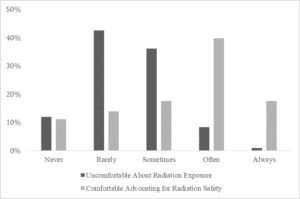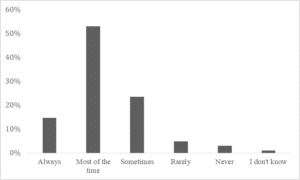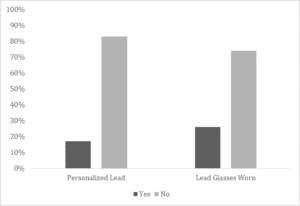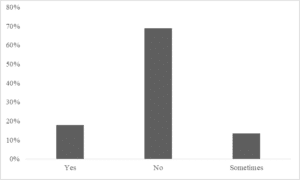Bourget-Murray J1, Gusnowski E1, Kooner S1, Kwong C1, Meldrum A1, Montgomery S1, Thomas K1, Fruson L1, Kendal J1, Litowski M1, Sridharan S1, James M1, Ludwig T1, Purnell J1, Wong M1, You D1, Benavides B1, Lukenchuk J1, Abbott A1, Morrison L1, Davison E1, Flanagan C1, Heard B1, Hewison C1, Lienhard K1, Rondeau K1, Schneider P1*
1University of Calgary Cumming School of Medicine, Department of Surgery, Calgary, AB, Canada
*Corresponding Author: Prism S Schneider, MD, PhD, FRCSC, Associate Professor, Cumming School of Medicine, University of Calgary, Orthopaedic Trauma Surgeon, Department of Surgery and Department of Community Health Sciences, McCaig Tower, 3134 Hospital Drive NW, Calgary, Alberta T2N 5A1, Canada; Email: [email protected]
Published Date: 29-05-2022
Copyright© 2022 by Schneider PS, et al. All rights reserved. This is an open access article distributed under the terms of the Creative Commons Attribution License, which permits unrestricted use, distribution, and reproduction in any medium, provided the original author and source are credited.
Abstract
Objective: There is ample literature demonstrating significant health risks associated with radiation exposure, yet there is no standardized radiation safety training for Canadian orthopaedic surgery residents. This is the first national survey investigating the prevalence of radiation safety training and radiation safety practices in Canadian orthopaedic residency programs.
Methods: A nationaln online survey was distributed to orthopaedic residents currently enrolled in a Canadian program from all post-graduate (PGY) levels who were fluent in English or French with a medical doctorate or equivalent training. Fellows, international elective or observer ship students were excluded.
Results: Overall response rate across Canada was 41% (n=116). Most respondents (94%, n=102) were concerned about the negative effects of radiation, yet only 11% (n=12) felt confident with their radiation safety knowledge. Of the residents who felt confident in their knowledge, only 42% (n=5) answered all three radiation safety screening questions correctly. Overall, 58% (n=66) of respondents had undergone some form of radiation safety training. Compliance with protective lead was high (92%, n=93) when available, but 82% (n=92) of respondents cited issues accessing properly fitting lead. Only 18% (n=20) of orthopaedic residents reported routinely wearing dosimeters.
Conclusion: Limited access to properly fitting protective lead, poor radiation safety knowledge, and lack of routine radiation monitoring could be placing residents at risk for poor health outcomes in the future. These results provide impetus for orthopaedic residency programs across Canada to implement higher safety standards in the form of standardized radiation safety training, routine dosimeter use, improved lead availability, and continued abidance to radiation safety protocols.
Keywords
Imaging Residency; Orthopedics; Radiography; Radiographic Imaging
Introduction
Advances in orthopaedic surgery have led to minimally invasive operative techniques which have been shown to decrease patient morbidity. However, these minimally invasive techniques necessitates increased use of intraoperative fluoroscopy [1-3]. Typically, the surgeon will stand in close proximity to the patient to make small adjustments to the extremity being imaged resulting in surgeon exposure to radiation scatter [4-7]. Certain subspecialties within orthopaedic surgery are exposed to higher amounts of radiation due to the nature of procedures performed. Gausden, et al., showed that attending orthopaedic surgeons specializing in trauma or deformity surgery received the highest radiation exposure [8]. For example, fluoroscopically intensive procedures such as those that utilize locked intramedullary nailing systems are responsible for the highest radiation doses amongst orthopaedic surgeons [1,2,7].
Factors affecting a surgeon’s radiation dose include: exposure time, distance from the beam’s central axis, the orientation of the fluoroscopic beam relative to the patient, the position of the surgeon within the operative field, and the use of protective equipment [9]. Many patient factors also increase a surgeon’s radiation exposure, including increased patient Body Mass Index (BMI) and fracture complexity [10]. In addition, the surgeon’s radiation exposure per case is dependent on the years of operating room experience [8,10]. Early career surgeons within their first three years of independent practice were exposed to significantly higher radiation than their senior colleagues with greater than ten years of experience [8,10].
The current National Council on Radiation Protection (NCRP) and United States Nuclear Regulatory Commission (NRC) recommend no more than 50 millisieverts (mSv) annually in combined occupational and non-occupational radiation exposure to avoid any ill-effects [8]. The International Commission on Radiological Protection defines 20 mSv per year as the annual occupational exposure limit1. The known health risks associated with increased radiation exposure include cataract formation, skin cancer, thyroid cancer, and leukemia1 [11]. Despite radiation protection measures, there is evidence of increased incidence of radiation-related diseases in orthopaedic surgeons. The published risk of developing cancer (i.e. thyroid cancer) is eight times higher in orthopaedic surgeons than in an unexposed worker. Additionally, the risk of harmful levels of radiation at eye level are highest during pelvic fixation and femoral intramedullary nailing [12,13]. In 2012, Chou, et al., showed increased risk of breast cancer in female orthopaedic surgeons [14]. As the number of female orthopaedic attending surgeons and trainees continues to increase, radiation safety in this subgroup is increasingly important.
In 2013, Chow, et al., surveyed orthopaedic surgeons’ understanding of the effect of radiation on their risk of cataract formation [15]. This study found that the greatest barrier to the use and understanding of protective measures was lack of information. This suggests that orthopaedic surgeons are not receiving adequate radiation safety training. Given that orthopaedic residents are exposed to radiation from Post-Graduate Year One (PGY1) onward, appropriate training at this early stage is critical.
To date, the level of radiation safety knowledge and formalized training throughout Canadian orthopaedic surgery programs is unknown. The objective of this survey was to assess the radiation safety knowledge, training, and practices across Canadian orthopaedic surgery residents. We hypothesized that there would be significant variability in the level of radiation safety teaching, knowledge, and practice across Canada.
Material and Methods
Survey Design
Following approval from the local Conjoint Health Research Ethics Board (CHREB) and endorsement from all Canadian orthopaedic training programs, this study was conducted using an online single submission survey. This survey aimed to assess both radiation knowledge and safety concerns amongst orthopaedic surgery residents in Canada. The survey questions were designed to address three major themes: radiation training, radiation safety practices, and radiation safety knowledge. The survey was comprised of 35 closed-ended questions, with a free text box to allow for participant comments when appropriate (Appendix 1-survey).
The survey was developed by our multidisciplinary working group based on Dillman’s principles of web-based survey design [16]. Question generation was informed by a review of the literature and through collaboration with resident trainees, our local program director, and a biostatistician. Content validity, clarity, and feasibility were verified through beta testing with orthopaedic fellows from local orthopaedic training programs. Recommended changes were incorporated into the final survey prior to distribution. The survey was translated into French for distribution throughout all Canadian training programs.
Demographic data collected included age, year of training, and geographic location of training program. Questions were designed to determine type of radiation safety training provided to residents both within and extracurricular to their training program, radiation safety experience in the operating room, and access and use of personal protective equipment. Radiation safety knowledge was tested with three standardized skill-testing questions and confidence in radiation knowledge was assessed.
Survey Population
Participant inclusion criteria consisted of all orthopaedic surgery residents actively participating in a Canadian residency program in either a clinical or research role; PGY levels 1-5; Medical Doctorate (MD) degree or equivalent; English or French competency. Exclusion criteria were extended trainees seeking further subspecialty training (fellows, international electives, and observerships).
Program directors and administrators from each program were engaged across Canada and were responsible for facilitating survey delivery to each resident. Recruitment was performed via an email to Canadian orthopaedic surgery residency program directors which was subsequently distributed to individual residents for voluntary involvement (n=284). Email reminders were sent twice, at 2-week intervals, during the study period (March 2019 to April 2019). The survey was closed one month after the original deployment date.
All obtained data were stored with SurveyMonkey Inc. Their application and user security include SSL/TLS encryption, and user data is logically segregated and encrypted for authentication. SurveyMonkey (SurveyMonkey Inc.) is web-based survey software, which is compliant with Canadian privacy and accessibility standards and does not collect any participant identifying information (such as a computer Internet Protocol (IP) address).
Data Analysis
All continuous variable data are reported as mean and standard deviation of the mean. All categorical data are reported as proportions. Descriptive statistics were used for final analysis. Chi-squared with Yates correction significance tests were performed and threshold values for significance were α ≤ 0.05 and β of 0.2.
Results
The survey was sent to 284 residents from each program in Canada; of those invited, 116 participated in the survey, yielding an overall response rate of 41%. The majority of respondents were male (65%, n=70), aged 25 to 29 years (56%, n=61) and from either Western Canada (37%, n=40) or the province of Ontario (38%, n=41). A total of 10 surveys were completed in French. Demographic data are presented in Table 1.
Radiation Safety Training
The majority of respondents stated that they had received formal radiation safety training (58%, n=66). Of these, 85% (n=56) reported that the training was “facilitated by their residency program”. Fifty-five percent (n=31) of respondents who had received formal radiation safety education found that the training increased their confidence in practicing radiation safety.
Radiation Safety Awareness and Knowledge
In total, 58% (n=65) of respondents felt moderately comfortable with their current radiation safety knowledge, while 32% (n=36) felt “not very” or “not at all” confident. Only 11% (n=12) of respondents felt “very confident” with their knowledge. Of those who reported feeling ‘very confident’ with their knowledge, there was no correlation related to training level (PGY1, n=2; PGY2, n=2; PGY3, n=4; PGY4, n=2; PGY5, n=2). Additionally, of the “very confident” respondents, only 42% (n=5) answered all three of the included radiation safety skill-testing questions correctly. Overall, 93% of respondents correctly identified which end of the C-arm emits radiation, 78% correctly identified that the thyroid is the most radiosensitive organ, but only 64% were aware that radiation dose increases to the operator with increasing patient body mass index.
Radiation Protection
Ninety-two percent (n=93) of respondents indicated that they “always” wear lead; however, 82% (n=92) noted that lead is not always available in their size (Fig. 1). There were significantly more French-speaking respondents who owned their own lead (p=0.013). The type of lead protection worn most often was a thyroid shield (n=107, 96%), while there was no reported use of leaded scrub caps or face shields (Table 2). Seventeen percent (n=19) of responding trainees own their own lead, 84% (n=16) of whom purchased that lead out of pocket (Fig. 2). Of those who own their own lead (n=18), only six (33%) report annual safety testing, as is recommended. There was no significant difference in the proportion of men and women who own personalized lead (female: n=5 out of 37, 14%; male: n=13 out of 70, 19%; X2 (1, N=107) = 0.155, p=0.694). Only twenty-three people responded to the question, “Do you own lead glasses?” and 26% (n=6) said yes. They all purchased the glasses out of pocket (Fig. 3). Eighteen percent (n=20) of respondents indicated that they routinely wear a dosimeter, all “yes” responses came from Western Canada or Ontario locations (Fig. 4).
Radiation Safety Practice
Sixty-nine percent (n=74) of respondents reported that their attending surgeons “always” or “often” demonstrate best practice, and 94% (n=102) “always” or “often” heard a verbal warning prior to radiation exposure. Overall, 81% (n=88) of trainee respondents were mildly or moderately concerned about the effects of radiation on their health, while 13% (n=14) were very concerned. Forty-five percent (n=49) of respondents felt uncomfortable about their radiation exposure, at least some of the time, however the majority (57%, n=62) reported that they always or often felt comfortable advocating for their safety (Fig. 1). When asked if the intent to have children affected their view on radiation safety, 56% (n=60) responded with “yes”. Sixteen percent (n=17) of respondents personally knew somebody negatively affected by radiation.

Figure 1: Resident comfort with radiation safety and exposure.

Figure 2: Availability of lead aprons in appropriate size.

Figure 3: Types of radiation protection used by all resident participants

Figure 4: Reported use of dosimeters by all survey participants.
Demographic Data | N (%) | |
Male | 70 (64.8%) | |
Female | 37 (34.3%) | |
Age | >25 | 2 (1.9%) |
25-29 | 61 (56.5%) | |
30-34 | 35 (32.4%) | |
35-40 | 9 (8.3%) | |
>40 | 1 (0.9%) | |
Location | Atlantic Canada* | 6 (5.6%) |
Western Canada ** | 40 (37%) | |
Ontario | 41 (38%) | |
Quebec | 21 (19.4%) | |
Territories*** | 0 (0%) | |
PGY | 1 | 16 (14.8%) |
2 | 24 (22.2%) | |
3 | 33 (30.6%) | |
4 | 19 (17.6%) | |
5 | 16 (14.8%) | |
* Includes NB, NS, PEI, NL **Includes AB, SK, MB *** Includes NWT, Yukon, Nunavut | ||
Table 1: Demographic data from survey respondents.
Lead Worn in the Operating Room | N (%) |
Yes | 93 (93%) |
No | 4 (4%) |
Sometimes | 4 (4%) |
Safety Equipment Used | |
Single piece – full apron | 53 (47.3%) |
Vest with wings | 36 (32.1%) |
Vest without wings | 71 (63.4%) |
Skirt | 87 (77.7%) |
Thyroid guard | 107 (95.5%) |
Leaded glasses | 9 (8%) |
Leaded scrub cap | 0 (0%) |
Leaded face shield | 0 (0%) |
Table 2: Resident use of protective lead.
Discussion
Interpretation of our survey data indicates a lack of standardized radiation safety training in Canadian orthopaedic surgery residency programs. The lack of training was a concern for a majority of residents and may be responsible for subjective and objective deficiencies in radiation safety knowledge. The damaging effects to human tissue caused by radiation exposure have been well-documented since the early use of radiography [17]. Deficiencies in knowledge and clinical application of radiation safety principles stemming from this lack of formal training could be placing residents at increased risk of negative health consequences. These deficiencies will continue and perpetuate as residents move into practice as independent surgeons. In 2013, Chow, et al., surveyed the Canadian Orthopaedic Association and found that these knowledge deficiencies were present at the attending staff surgeon level15. Orthopaedic surgeons cited an information deficit as the greatest limitation to awareness of cataractogenesis, dose limits, and use of radio protective eyewear. Tuncer, et al., (2017) found similar deficits in knowledge and understanding of radiation protection, in that only 8.5% of orthopaedic surgeons and residents had read at least one article pertaining to radiation safety [18].
The results of the current study indicate a need for timely intervention at the trainee level. The Royal College of Physicians and Surgeons of Canada have included radiation safety as an objective for all residents enrolled in “Surgical Foundations”; however, less than half of the total respondents had received formal radiation safety training as part of their residency program. This suggests that the current curriculum is insufficient to meet this important training objective. A national curriculum may help to increase resident knowledge and allow Surgical Foundations objectives to be met in a standardized fashion.
In terms of radiation safety practice, residents reported high compliance with donning of protective lead, but infrequent lead evaluation. However, the majority indicated that lead is not always available in their size. Wearing appropriately-fitting lead is critical to preventing unnecessary exposure to uncovered areas [17]. When lead gowns are worn appropriately, radiation absorption can be decreased by 90 to 99% [19]. This highlights a critical gap in provision of properly fitting lead protection for trainees. Less than 10% of respondents reported using lead glasses, despite recommendations from the International Commission on Radiological Protection [16]. Of the small minority who reported owning personalized lead, most did not meet the recommended yearly evaluation. Provision of personal lead and lead glasses may increase safety measures by allowing residents to have access to the proper personal protective equipment at all times.
Our study also demonstrated that radiation monitoring are deficient in Canadian orthopaedic programs. Only 18% (n=20) of respondents reported that their radiation exposure was monitored with dosimeters. Furthermore, 18% is an overestimation, given that one resident group was participating in a study that required dosimeter monitoring at the time of survey administration. This group did not wear dosimeters prior to the study, and no longer wear dosimeters since the completion of the study. Beyond this group, there were only four individuals who reported dosimeter use that was unrelated to a radiation monitoring study. The latest review suggests that all personnel who encounter radiation exposure should wear personal dosimeters and that this data should be monitored regularly [17].
While the majority of residents are concerned about the effects of radiation on their health, only 57% of survey respondents reported feeling comfortable advocating for radiation safety in the operating room. A contributing factor may be that the hierarchal culture of the operating room has been shown to suppress open and honest communication [20]. If attending surgeons have less training and awareness, their actions may negatively influence safety practices for those with appropriate knowledge. This also highlights the need for continuing medical education for both radiation safety and operating room communication throughout one’s career.
One of the notable limitations of our study is that the rigour of radiation safety training programs was not assessed. This would have been useful information, given the potential variability in content, duration, and intensity of various training programs. Given the nature of survey-based research, recall bias may have affected the accuracy of individual responses regarding radiation safety training at their institution. Additionally, despite a reasonable response rate, there was still a large contingent of non-responders across Canada (n = 168, 59%), with the Atlantic provinces underrepresented by responses. However, one of the strengths of our study is the involvement of the majority of orthopaedic residency programs across Canada and the inclusion of both an English and French version. Overall, 116 residents participated in the survey, providing a broad picture of radiation safety knowledge in orthopaedic trainees across Canada, which supports the need for improved radiation safety practices.
Conclusion
This survey study has identified deficiencies in radiation safety training and protocols across many Canadian orthopaedic residency training programs. These results will serve as impetus for orthopaedic residency programs across Canada to implement higher safety standards in the form of standardized radiation safety training, routine dosimeter use, and improved protective lead provision and availability.
Conflict of Interest
There is no conflict of interest ensued by author.
References
- Rehani MM, Ciraj-Bjelac O, Vano E. IRCP publication 117. Radiological protection in fluoroscopically guided procedures performed outside the imaging department. Annals ICRP. 2010;40(6):1-102.
- Kesavachandran CN, Haamann F, Nienhaus A. Radiation exposure of eyes, thyroid gland and hands in orthopaedic staff: a systematic review. European J Med Res. 2012;17:28.
- Stewart FA, Akleyev AV, Hauer-Jensen M. ICRP publication 118: ICRP statement on tissue reactions and early and late effects of radiation in normal tissues and organs threshold doses for tissue reactions in a radiation protection context. Annals ICRP. 2012;41(1-2):1-322.
- Miller ME, Davis ML, MacClean CR. Radiation exposure and associated risks to operating-room personnel during use of fluoroscopic guidance for selected orthopaedic surgical procedures. J Bone Joint Surg Am. 1983;65(1):1-4.
- Riley SA. Radiation exposure from fluoroscopy during orthopaedic surgical procedures. Clin Orthop Relat Res. 1989(248):257-60.
- Kitaoka HB, Alexander IJ, Adelaar RS. Clinical rating systems for the ankle-hindfoot, midfoot, hallux, and lesser toes. Foot Ankle Int. 1994;15(7):349-53.
- Levin PE, Schoen RW, Browner BD. Radiation exposure to the surgeon during closed interlocking intramedullary nailing. J Bone Joint Surg Am. 1987;69(5):761-6.
- Gausden EB, Christ AB, Zeldin R. Tracking cumulative radiation exposure in orthopaedic surgeons and residents: what dose are we getting? J Bone Joint Surg Am. 2017;99(15):1324-9.
- Bone CM, Hsieh GH. The risk of carcinogenesis from radiographs to pediatric orthopaedic patients. J Pediatr Orthop. 2000;20(2):251-4.
- Botchu R, Ravikumar K. Radiation exposure from fluoroscopy during fixation of hip fracture and fracture of ankle: Effect of surgical experience. Ind J Orthop. 2008;42(4):471-3.
- Hendee WR. History, current status and trends of radiation protection standards. Medical Physics. 1993;20(5):1303-14.
- Giannoudis PV, McGuigan J, Shaw DL. Ionising radiation during internal fixation of extracapsular neck of femur fractures. Injury. 1998;29(6):469-72.
- Cheriachan D, Hughes AM, du Moulin WS. Ionizing radiation doses detected at the eye level of the primary surgeon during orthopaedic procedures. J Orthop Trauma. 2016;30(7):e230-5.
- Chou LB, Chandran S, Harris AH. Increased breast cancer prevalence among female orthopaedic surgeons. J Women’s Health. 2012;21(6):683-9.
- Chow R, Beaupre, L, Rudnisky C. Surgeons’ perception of fluoroscopic radiation hazards to vision. Am J Orthop. 2013;42(11):505.
- Dillman DA, Smyth JD, Christian LM. Internet, mail, and mixed-mode surveys: The tailored design method (3rd). John Wiley and Sons Inc. 2009.
- Frane N, Megas A, Stapleton. Radiation exposure in orthopaedics. JBJS Reviews. 2000;8(1):e0060.
- Tuncer, Nejat, Kuyucuİrem. Orthopedic surgeons’ knowledge regarding risk of radiation exposition: a survey analysis. SICOT-J. 2017;3(29).
- Singer G. Occupational radiation exposure to the surgeon. J Am Acad Orthop Surg. 2005;13(1):69-76.
- Bould M, Sutherland, Sydor DT. Residents’ reluctance to challenge negative hierarchy in the operating room: a qualitative study. Can J Anaesth. 2015;62(6):576-86.
Article Type
Data Article
Publication History
Received Date: 30-04-2022
Accepted Date: 22-05-2022
Published Date: 29-05-2022
Copyright© 2022 by Schneider PS, et al. All rights reserved. This is an open access article distributed under the terms of the Creative Commons Attribution License, which permits unrestricted use, distribution, and reproduction in any medium, provided the original author and source are credited.
Citation: Schneider PS, et al. Assessment of Radiation Safety Training, Practices and Knowledge amongst Canadian Orthopaedic Resident Training Programs. J Ortho Sci Res. 2022;3(2):1-12.

Figure 1: Resident comfort with radiation safety and exposure.

Figure 2: Availability of lead aprons in appropriate size.

Figure 3: Types of radiation protection used by all resident participants

Figure 4: Reported use of dosimeters by all survey participants.
Demographic Data | N (%) | |
Male |
| 70 (64.8%) |
Female |
| 37 (34.3%) |
Age | >25 | 2 (1.9%) |
| 25-29 | 61 (56.5%) |
| 30-34 | 35 (32.4%) |
| 35-40 | 9 (8.3%) |
| >40 | 1 (0.9%) |
Location | Atlantic Canada* | 6 (5.6%) |
| Western Canada ** | 40 (37%) |
| Ontario | 41 (38%) |
| Quebec | 21 (19.4%) |
| Territories*** | 0 (0%) |
PGY | 1 | 16 (14.8%) |
| 2 | 24 (22.2%) |
| 3 | 33 (30.6%) |
| 4 | 19 (17.6%) |
| 5 | 16 (14.8%) |
* Includes NB, NS, PEI, NL **Includes AB, SK, MB *** Includes NWT, Yukon, Nunavut | ||
Table 1: Demographic data from survey respondents.
Lead Worn in the Operating Room | N (%) |
Yes | 93 (93%) |
No | 4 (4%) |
Sometimes | 4 (4%) |
Safety Equipment Used | |
Single piece – full apron | 53 (47.3%) |
Vest with wings | 36 (32.1%) |
Vest without wings | 71 (63.4%) |
Skirt | 87 (77.7%) |
Thyroid guard | 107 (95.5%) |
Leaded glasses | 9 (8%) |
Leaded scrub cap | 0 (0%) |
Leaded face shield | 0 (0%) |
Table 2: Resident use of protective lead.


